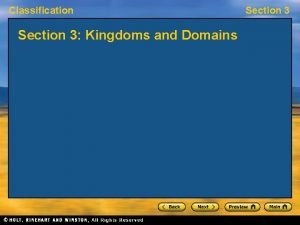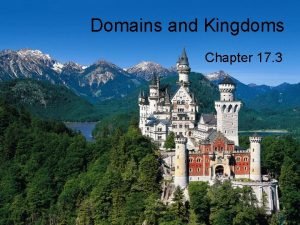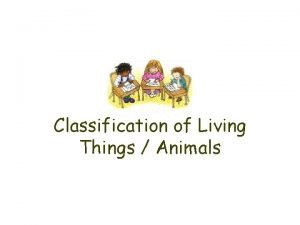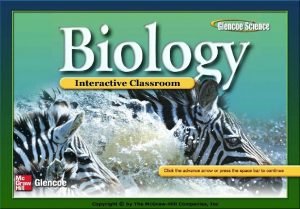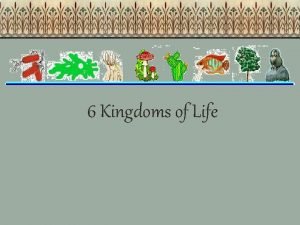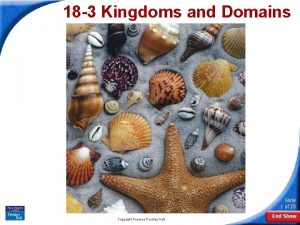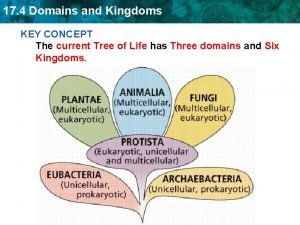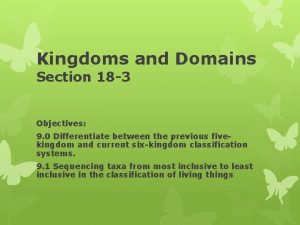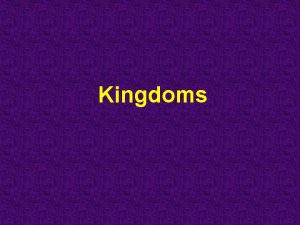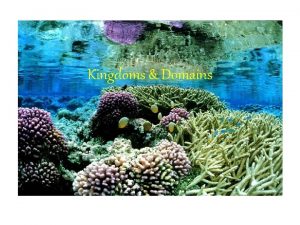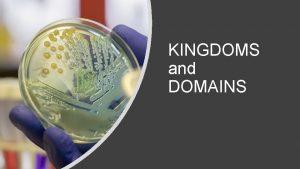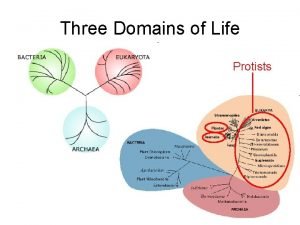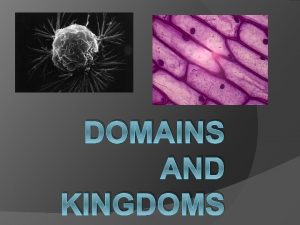Cells the Three Domains the Four Kingdoms How









- Slides: 9

Cells, the Three Domains & the Four Kingdoms

How are organisms classified into domains & kingdoms? p Cells n Organisms are placed into Domains based on their cell type n 2 types of cells p Eukaryotic § Cells have a nucleus § Nucleus – membrane covered organelle containing the cell’s DNA § Larger and more complex than prokaryotic cells § Has many organelles within the cell suspended in a fluid called cytoplasm

Cells continued n Prokaryotic Cells without a central nucleus p DNA is circular and free floating in the cytoplasm p Cells are much smaller than eukaryotic cells p Cells are much simpler containing no membranecovered organelles p 2 types p § Eubacteria – common today. Found everywhere § Archeabacteria – found in extreme environments

The 2 Domains of Bacteria are prokaryotic cells (do not have a nucleus containing DNA) p Domain Archea (also Kingdom Archea) p n n n p Been on Earth for 3 billion years Thrive in harsh environments such as: hot springs and hydrothermal vents Autotrophs – using chemosynthesis Heterotrophs Differ chemically from Eubacteria and in cell structure. Domain Bacteria (Kingdom Eubacteria) n n Eubacteria which include most bacteria Found nearly everywhere

Domain Eukarya Organisms in this domain have eukaryotic cells. p Eukaryotes are organisms with cells that contain nuclei. p There are 4 kingdoms within this domain p

Kingdom Protista Single celled or simple multicellular organisms p Eukaryotic cells p Evolved 2 billion years ago and are made up of all eukaryotes that are not plants, animals or fungi. p Can be animal-like, plant-like or funguslike in their characteristics p

Kingdom Plantae Usually green and can utilize the process of photosynthesis making them autotrophic p Complex, multicellular organisms p

Kingdom Fungi Originally classified as plants, but do not do photosynthesis so eventually were placed in their own kingdom p Includes molds and mushrooms p Can be unicellular or multicellular p heterotrophs p

Kingdom Animalia Complex, multicellular organisms p Most can move and have nervous systems that help them sense and react to their surroundings p Cells lack cell walls unlike plants, fungi, bacteria, and most protists p Heterotrophs p
